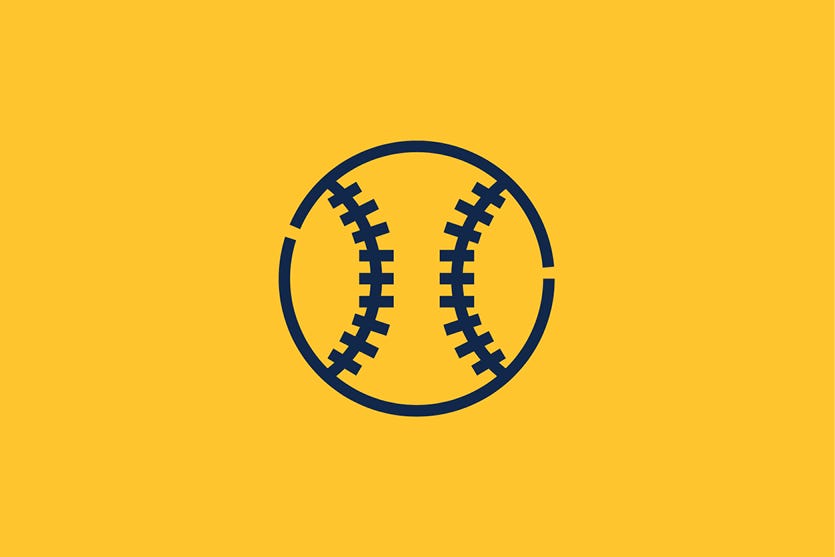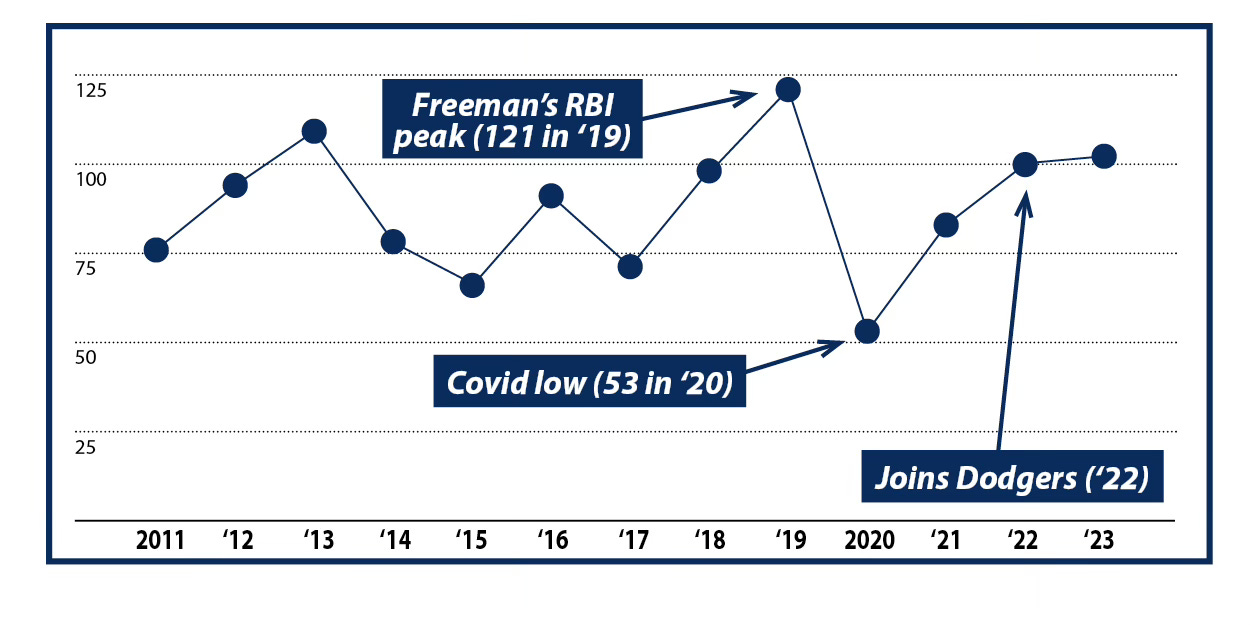[ad_1]
Nine big-league clubs reached June 15 — the two-and-a-half-month mark in 2024’s six-month schedule — with winning percentages of .550 or better.
That puts them on pace to win at least 90 games. It also means they’re likely to make the playoffs. Not guaranteed, but likely.
Let’s look back at the same date in the past three seasons. A total of 33 teams hit June 15 with records of .550 or better in 2021, 2022, or 2023. Three-quarters of them — 25 of 33 — went on to qualify for the postseason. Those are promising odds indeed.
Here are the nine clubs whose fast starts had positioned them so well at the midpoint of June:
-
1. New York Yankees, 50-22 (.694)
-
2. Philadelphia Phillies, 47-22 (.681)
-
3. Cleveland Guardians, 44-23 (.657)
-
4. Baltimore Orioles, 45-24 (.652)
-
5. Los Angeles Dodgers, 43-28 (.606)
-
6. Milwaukee Brewers, 40-29 (.580)
-
7. Seattle Mariners, 41-31 (.569)
-
8. Kansas City Royals, 40-31 (.563)
-
9. Atlanta Braves, 37-30 (.552)
The Milwaukee Brewers boasted one of the strongest rotations in 2023, led by three of the National League’s best pitchers: Corbin Burnes, Brandon Woodruff, and Freddy Peralta.
But that was last year. Burnes has since been traded to Baltimore, Woodruff is out for the season with a shoulder injury, and Peralta has been unexpectedly inconsistent. Opponents no long fear the Brewers’ starting pitchers.
And yet Milwaukee once again holds first place in the National League Central, just as it did a year ago. A rejuvenated offense deserves much of the credit, and so does a bullpen that has remained steadfast despite the loss of closer Devin Williams, last year’s NL Reliever of the Year. (Stress fractures in his back will keep Williams out of action for at least three months this season.)
So why is this story under the Worst subhead? Because Milwaukee’s relievers are being seriously overworked, leading to questions about their durability. Will they still be effective when the pennant race enters the stretch drive?
Milwaukee’s starting pitchers have lasted an average of 4.7 innings (roughly 14 outs) this year, the worst figure in the majors. That means the club’s bullpen is responsible for 13 outs in a typical nine-inning game, a workload that could exact a price in September.
Here are the five clubs with the fewest innings pitched per game started (IP/GS) as of June 15. The four teams besides Milwaukee all had losing records at that point:
-
1. Milwaukee Brewers, IP/GS 4.7
-
2. San Francisco Giants, IP/GS 4.8
-
3. Miami Marlins, IP/GS 4.9
-
4. Arizona Diamondbacks, IP/GS 5.0
-
4. Chicago White Sox, IP/GS 5.0
Freddie Freeman has driven home at least 50 runs in each season since 2011. That’s 13 years and counting, the longest streak in the major leagues.
Freeman’s first full season with the Atlanta Braves was 2011, when he played 157 games, accumulated 76 runs batted in, and finished second in balloting for the National League’s Rookie of the Year.
He climbed into triple figures two years later with 109 RBIs, and he peaked with 121 in 2019. His streak came under the greatest pressure in 2020’s Covid-shortened season, which lasted only 60 games. Yet he managed to eke out 53 runs batted in.
The following chart shows Freeman’s year-by-year RBI output
A new installment will arrive in your email each Tuesday morning
Membership of the 500-home-run club is stalled at 28. Miguel Cabrera became the last player to join its ranks in August 2021.
Who will be next? Nobody is really close. Giancarlo Stanton’s total of 419 is the highest among active players, but he’s obviously two or three years away, if he can make it at all. Mike Trout is next at 378, but he’s no longer young (soon to be 33), and injuries have plagued him in recent seasons.
Let’s take a moment and consider the sluggers who have already met the standard. Look to the bottom of this newsletter for the answers to today’s quiz:
1. Who is baseball’s career leader in home runs?
2. How many batters hit at least 700 homers in their careers?
-
A. Two
-
B. Three
-
C. Four
-
D. Five
3. Who hit the most home runs in the 20th century (1900-1999)?
-
A. Henry Aaron
-
B. Barry Bonds
-
C. Alex Rodriguez
-
D. Babe Ruth
4. Who hit the most home runs in the 21st century (2000-2023, not including 2024)?
5. Who hit the most career homers for a switch-hitter?
Joey Votto is no longer with the Reds, but he is still considered to be an active player.
Votto signed with the Toronto Blue Jays this spring after 17 seasons in Cincinnati, though an ankle injury has kept him on the sidelines. Reports out of Canada indicate that he could soon swing into action with the Jays’ AAA club in Buffalo and perhaps eventually return to the majors.
Votto’s status is important for this week’s Leaderboard, which counts the number of times a currently active player has batted .300 or better while playing at least 100 games.
Votto is the all-time leader with eight such seasons, the first coming in 2009, the last (or most recent) in 2017.
Six other active players have posted at least four seasons of batting averages at or above .300, according to Baseball Reference. Here’s the list:
-
1. Joey Votto, 8 seasons at .300-plus (first: 2009, last: 2017)
-
2. Freddie Freeman, 7 seasons at .300-plus (first: 2013, last: 2023)
-
3. Jose Altuve, 6 seasons at .300-plus (first: 2014, last: 2022)
-
4. J.D. Martinez, 5 seasons at .300-plus (first: 2014, last: 2019)
-
4. Mike Trout, 5 seasons at .300-plus (first: 2012, last: 2018)
-
6. Paul Goldschmidt, 4 seasons at .300-plus (first: 2013, last: 2022)
-
6. DJ LeMahieu, 4 seasons at .300-plus (first: 2015, last: 2019)
The 1984 Detroit Tigers — rated as the best team of baseball’s Modern Era (1961 to the present) — had another confrontation with their closest pursuer 40 years ago this week.
The Tigers traveled to Toronto to face the Blue Jays, who sat seven games behind Detroit in the American League East at the start of the week of June 11-17, 1984. The two teams had split a four-game series in Michigan a few days earlier.
Detroit took the June 11 opener in Toronto, 5-4, thanks to a clinching home run by second baseman Lou Whitaker. Willie Hernandez worked the final two-and-a-third innings to lock down the victory, picking up his 10th save of 1984. “We wouldn’t be in first place without him,” said manager Sparky Anderson. “It’s that simple.”
The Jays powered up their offense the next two days, winning the final two games of the series, 12-3 and 7-3.
Then it was on to Milwaukee for the Tigers, along with a resumption of their winning ways. They swept three games from the Brewers, giving them a 47-16 (.746) record at the end of the week. They continued to lead Toronto by six games.
The New York Mets started the week of June 11-17, 1962, on a positive note. They defeated their fellow National League expansion team, the Houston Colt .45s, 3-1. Starting pitcher Al Jackson went the distance to pick up his third win of the season.
That’s when the week turned sour for the Mets, who would eventually lose more games in a single season than any other Modern Era club. They dropped their remaining two games with Houston, then four straight to the Chicago Cubs.
New York’s record on the morning of June 18 was 16-44, putting them in last place in the NL, 25 games behind the frontrunning Los Angeles Dodgers.
But there was one bright spot. The Mets were on track to finish sixth in the 10-team league in attendance. They bought space in local papers in mid-June to thank their fans. “Once and for all,” the ad said, “the myth has been shattered that New York is a cynical sports city, settling only for a winner.”
1-B. (You may not like the answer, but you know it’s Bonds with 762 homers, seven ahead of runner-up Aaron’s 755.)
2-C. (Rounding out the foursome are Ruth at 714 and Albert Pujols at 703.)
3-A. (Aaron and Ruth played their entire careers in the 20th century. They’re first and second in the 1900-1999 standings with their respective totals of 755 and 714. Bonds is down in 22nd place with 445 homers through 1999.)
4-C. (Pujols’s entire career — and all 703 homers — occurred in this century. Rodriguez is a distant second at 548 homers since 2000.)
5-C. (Mantle leads all switch-hitters with 536 homers, followed by Murray with 504.)
[ad_2]
Source link







